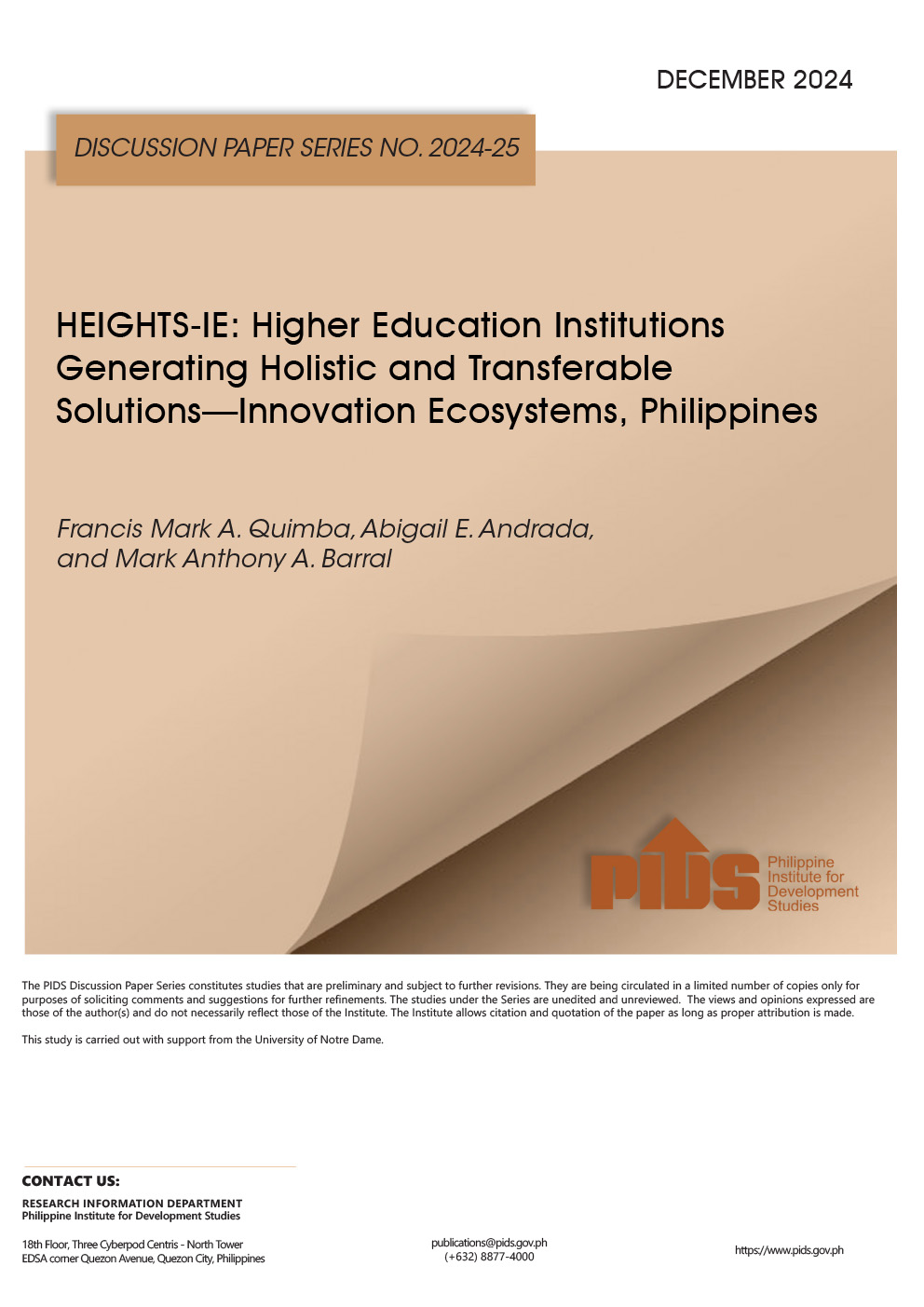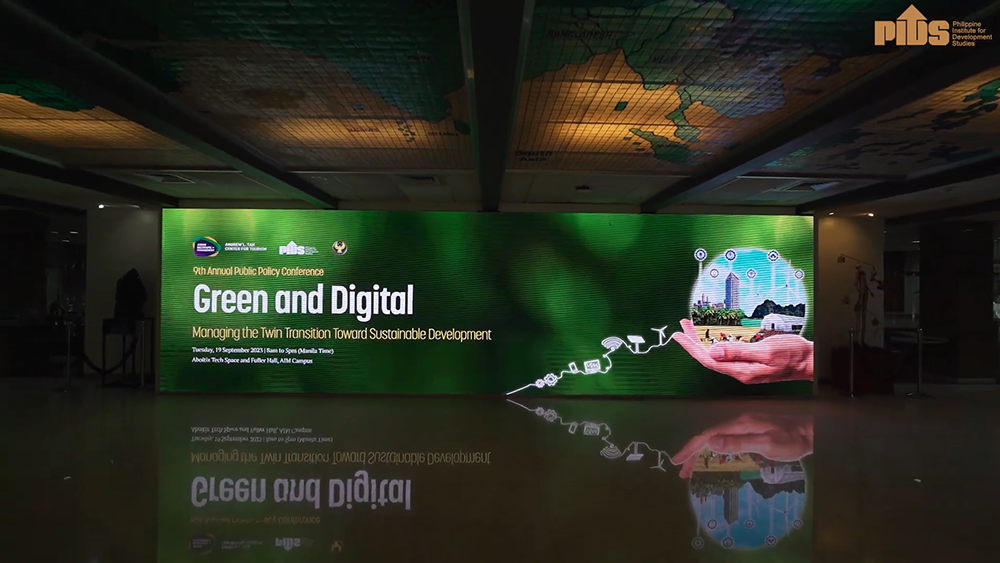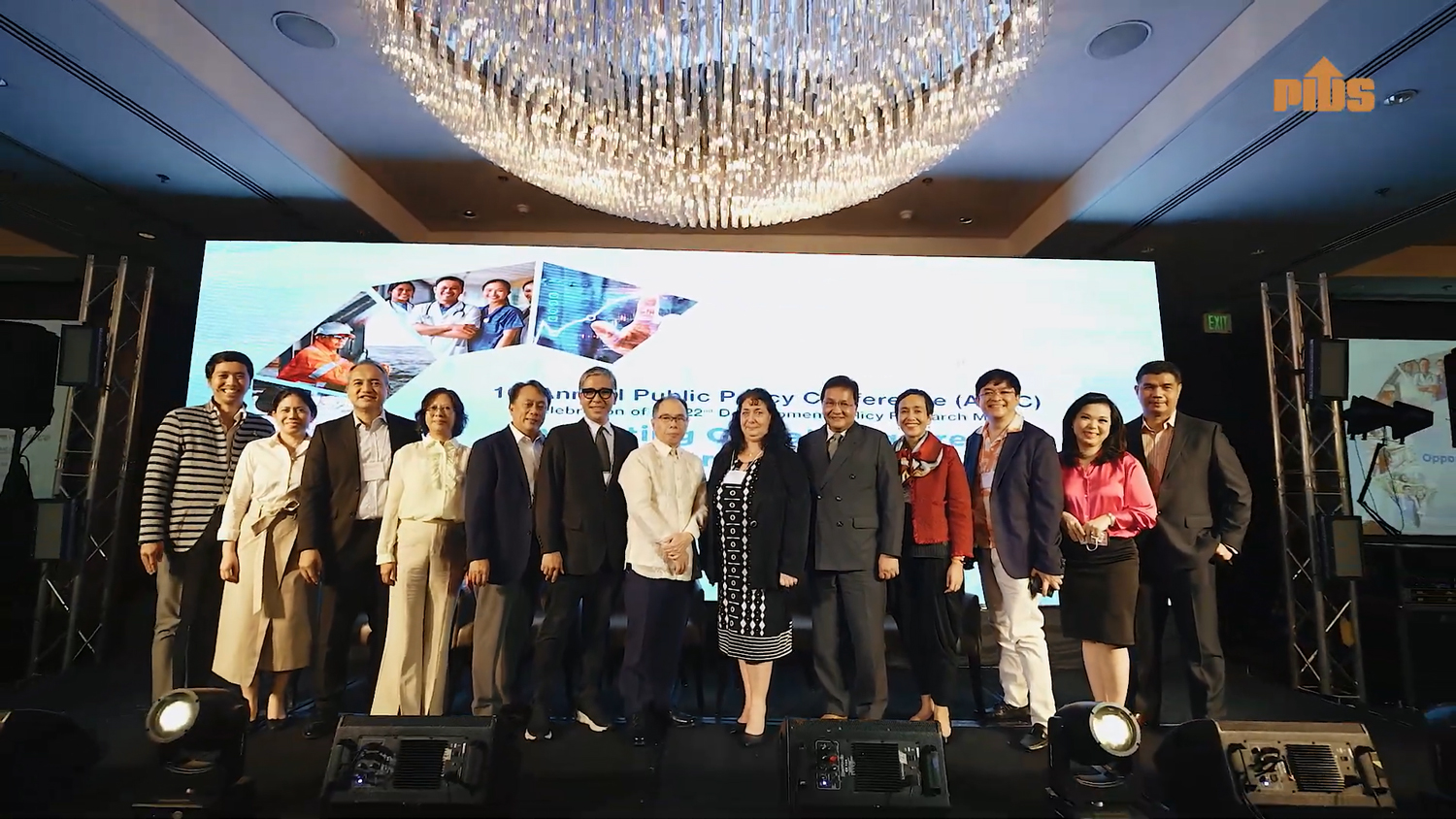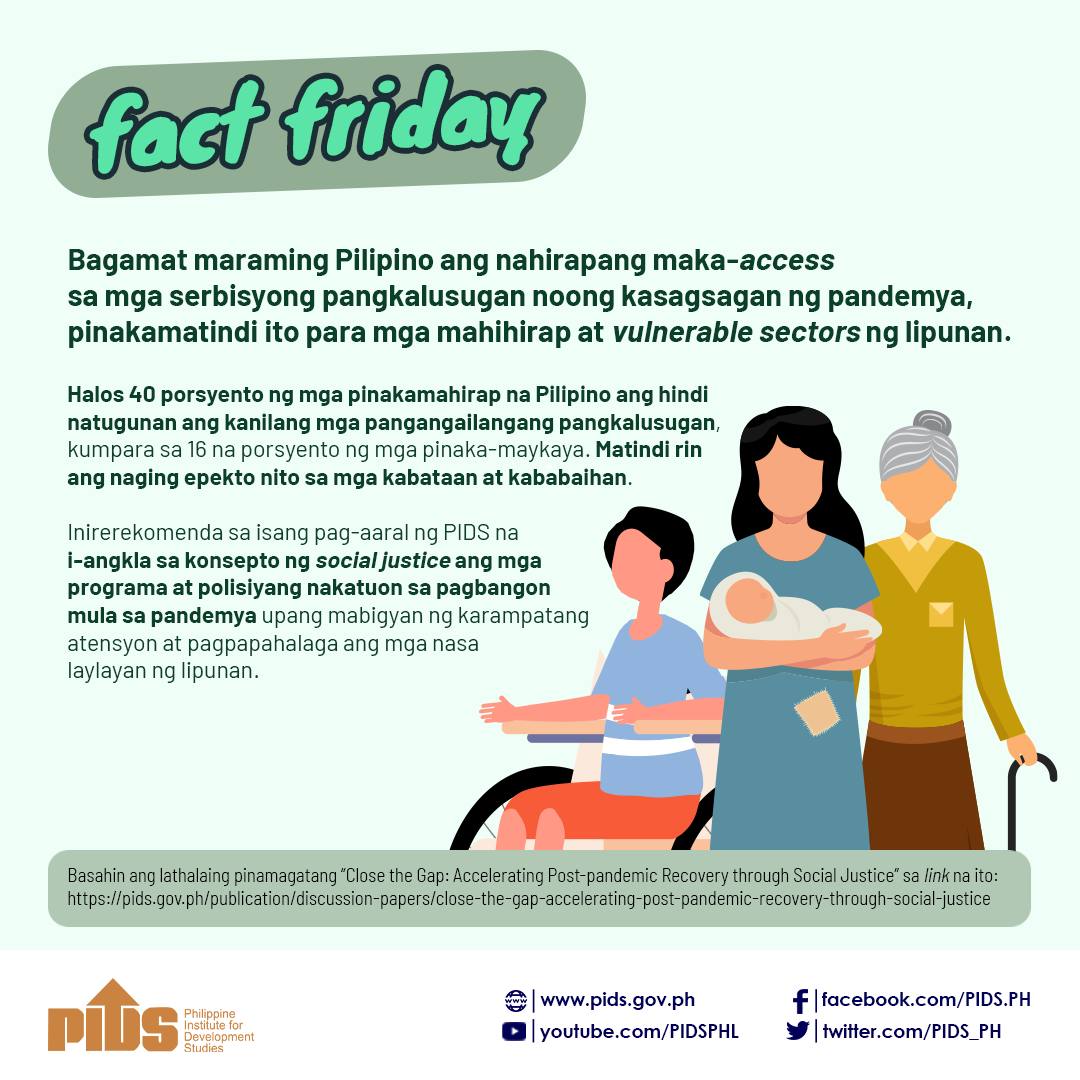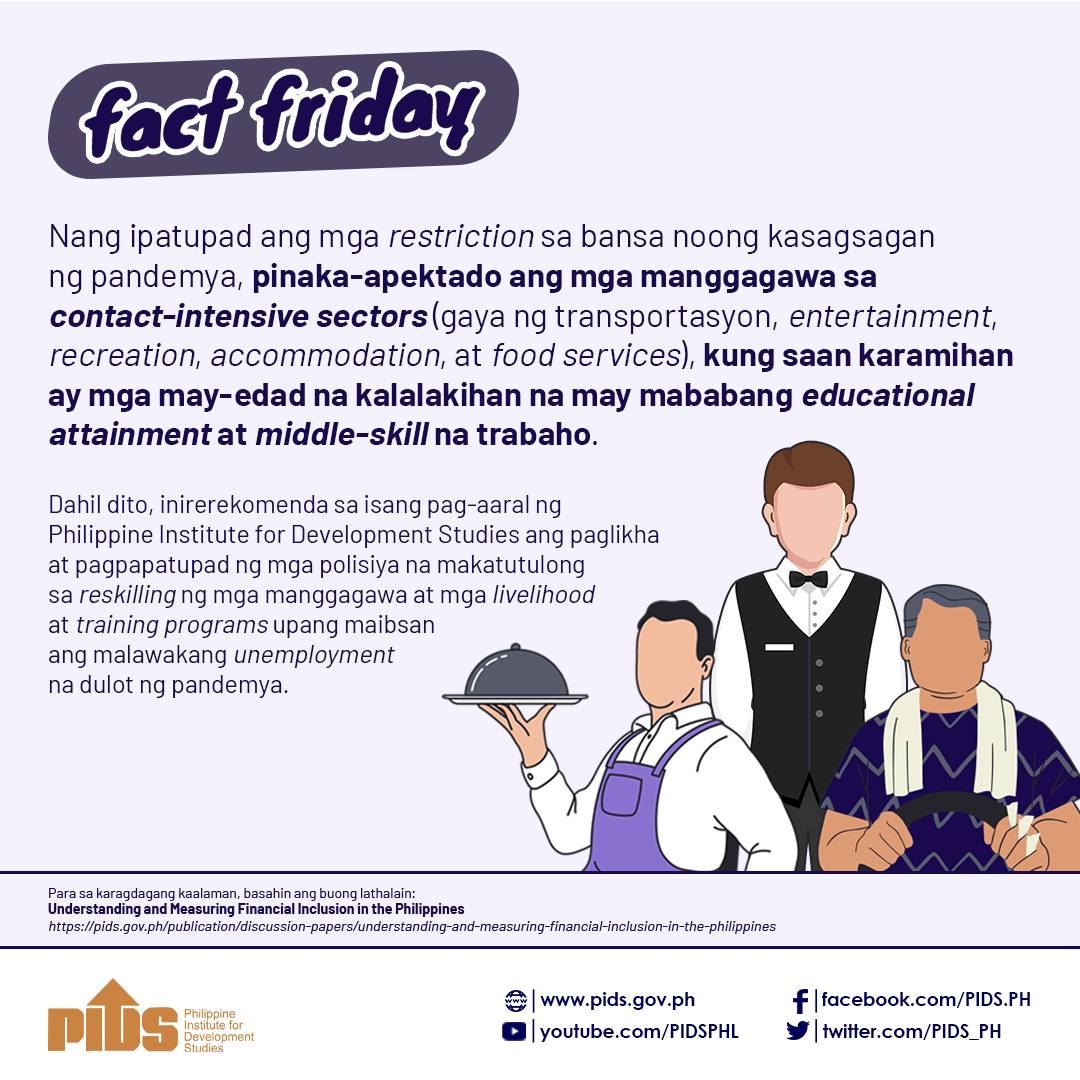First of two parts
CLANG. Click.
With those sounds echoing behind his back, Rodel Mojica sighed in mixed sadness and spiritedness as he stepped outside the steel gates of the New Bilibid Prison in Muntinlupa City: a place he called home for several years.
And how he rued having such freedom as Mojica found himself homeless. Neither family member nor friend waited for him outside the tall moss-ridden prison walls.
Mojica said his siblings turned their backs on him. He later looked up a distant cousin, offered to help build them a house, and stayed until he was booted out, back to the streets.
Years of working and living in construction sites where he worked as a laborer, had led him to meet his wife with whom he now has a 4-year old son, Ruben.
Things were looking up when, on March 17, the Duterte administration imposed a total lockdown to halt the spreading coronavirus disease 2019. Business activities like construction shut down and Mojica was left with no job.
Then his wife died of complications related to asthma at the height of the lockdown.
As a single parent, Mojica can only dream that his life would be as comfortable as those who live in the towering skyscrapers across the Pasig riverwalk where his pushcart, the one he calls home with his son, is now parked.
Day-to-day survival
STILL, Mojica considers himself a survivor; having to find sources of income to survive the worst recession the world has seen since World War II.
Mojica and his son, Ruben, know all too well that every junk item they pick up is “street gold.” These serve as a lifeline that could extend their lives for another day or two in the urban jungle.
With no place but the streets to call home, Mojica had to make do with what he had. He used corrugated scrap to put up a roof on his pushcart to protect them, at least, from the heat and the rain.
“Buti na lang may bahay din kami ng anak ko. Kahit may gulong ang bahay naming, okay na rin ito kasi minsan pinapaalis kami dito sa pwesto naming. Kahit paano, madaling alisin at hindi nila makukuha ang bahay namin,” Mojica told the BusinessMirror. [It’s a good thing we have a house. It’s good our house has wheels because there are times when people tell us to move. We can easily move our house and no one can take it away from us].
Evictions real
THE way that Mojica transformed a common wooden pushcart into a home was borne out of necessity and reflects the situation of millions of Filipinos who still don’t own a place they can call home—truly, they are in dire straits.
More common among them are those who occupy land without the consent of property owners: called squatters pejoratively but now tagged as informal settler families (ISFs).
It is estimated that around 2.2 million Filipinos or 5.4 percent of the urban population in 2012 lived in informal settlements. As much as 1.3 million are, just like Mojica, living in Metro Manila, according to World Bank estimates in 2017.
In the same year, the National Economic and Development Authority (Neda) placed the number of ISFs both in urban and rural areas at 1.5 million. Around 584,425 Filipinos or 39 percent of the total were living in Metro Manila in 2011, the Neda estimated.
The John J. Carroll Institute on Church and Social Issues (ICSI) at the Ateneo de Manila University said “regardless of the differences in available estimates, the fact remains that millions of families can one day lose their homes when the legal owners or government decide to evict them from the land.”
Flock to cities
THE main driver of the increase in the number of ISFs is the high urbanization rate in the country. People tend to flock to high growth areas in search for better economic opportunities.
Based on ICSI’s data, nearly half or 45.3 percent or 41.9 million Filipinos lived in urban areas a decade ago. At that time, there were only 92.3 million Filipinos.
This is not far from government’s estimate that urban population to total population called “urbanization rate” in economic parlance is at 44 percent. This figure was the estimate of the United Nations based on the 2017-2022 Philippine Development Plan (PDP).
The UN also estimated in 2015 that by the year 2050, the country’s total population in urban areas will reach 56.3 percent. Along with this estimate is the widening of the housing gap in the country.
Estimated backlog
THE newly-created Department of Housing and Sustainable Urban Development (DHSUD) currently estimated that between 2017 and 2022, the housing backlog is at 6.57 million.
This number includes the 1.44 million accumulated need among ISFs and 5.13-million future and/or recurrent need from the formal sector as well as those who need to repair or replace housing units. Such figure, however, is lower than the projection in the 2017-2022 PDP, which estimates that the total housing need by 2022 would reach 6.8 million.
The Neda estimated that as of December 2016, the backlog has reached 2.02 million. This is composed of 1.29 million accumulated needs. The figure also includes 799,780 households who are living in unacceptable housing and 493,427 who are living in doubled-up households in acceptable homes.
Those living in unacceptable housing are composed of people who are “rent-free without consent of owner” at 535,418 Filipinos; homeless, 5,390; had dilapidated or condemned structure, 91,758; and, had marginal housing, 167,214.
The total for 2016 also included 724,702 houses for future or recurrent needs. This number is composed of 361,129 units (as an allowance for inventory losses) and 363,573 units for those who can afford to own acceptable housing units.
Needs, wants
BY the end of the PDP and consistent with the Sustainable Development Goals (SDGs), the government aimed to decrease the proportion of urban population living in slums, informal settlements or inadequate housing to 22 percent from 40.9 percent in 2016.
The PDP also aims to increase the proportion of socialized housing target to housing needs to 85 percent from the 47.87 percent posted in 2016.
If these targets are not met and improvements are not made in closing the gap, the DHSUD said the housing gap will balloon to 22.61 million by 2040, placing the compounded annual growth rate of the backlog to 7 percent.
The total backlog in 20 years will be composed of the accumulated need of ISFs at 1.98 million and 20.63 million from the formal sector as well as those who need to repair or replace housing units.
“Bad housing is also bad for public health,” ICSI Associate Director Anna Marie A. Karaos told the BusinessMirror via email. “As housing becomes more costly, even the middle class will not be able to afford housing. Substandard housing will [also] increase.”
Decent, affordable
JESSAN Catre, Country Lead for Philippine Shelter Lab of Habitat for Humanity’s Terwilliger Shelter for Innovation, said another important sector that the government tends to overlook is the “unserved” market.
In their study with the Center for Research and Communication Foundation Inc., Habitat for Humanity found that the country’s housing needs until 2022 is even more staggering at 15.08 million.
This includes about 5.93 million Filipinos who are part of the unserved market; 5.12 million for those who need socialized housing; 2.11 million for those in need of economic housing; and, 1.9 million for those who need low-cost housing.
Catre said among these housing needs, the direst is that of the unserved housing market that includes more than 3 million low-income Filipinos who build homes incrementally over decades and which Habitat for Humanity refers to as “owner-driven construction.”
He explained that these “incremental builders” lack decent and affordable homes because they are unable to access quality building materials, formal financing channels, training and information on appropriate construction technology.
“They are who we refer to as the ‘invisible housing market’,” Catre said. They are the ones in need of more information on how to make better decisions in building better and safer homes, especially when they do it themselves.”
Yearly averages
IN the Philippines, “affordable decent housing” is considered a human right.
Article 13 on Social Justice and Human Rights in Section 9 of the 1987 Constitution states that the country “shall, by law, and for the common good, undertake, in cooperation with the public sector, a continuing program of urban land reform and housing, which will make available at affordable cost decent housing and basic services to underprivileged and homeless citizens in urban centers and resettlements areas.”
DHSUD data showed that between 1975 and 2018, a total of 4.12 million housing units were completed. This meant an average of only 95,725.74 houses per year.
On average, DHSUD said the Duterte administration built the most number of houses annually compared to the annual averages of previous administrations, including that of former President Ferdinand Marcos’s.
In the past 2.5 years, or between July 2016 and December 2018, the Duterte administration built 510,045 housing units. This translated to an annual average of 204,018 units.
The DHSUD housing data showed the Marcos administration with a term of 10 years, between 1975 and 1985 built 135,575 houses or an annual average of 13,558 homes, the lowest among all administrations in the past 43 years.
On top
“COMPARING the accomplishment of the housing sector to previous administrations, the average annual accomplishment under the Duterte leadership remains on top,” DHSUD Secretary Eduardo D. del Rosario told the BusinessMirror in an email.
Del Rosario added that President Duterte’s signing of Republic Act 11202, which created the agency he heads, “is a clear proof of the government’s commitment to 81 percent of Filipinos or about 85 million to assist them in getting their own homes.”
Based on the PDP, the country’s medium term socioeconomic blueprint, the previous administration only delivered direct housing assistance to 730,000 households: an 83-percent accomplishment rate.
The Neda said the estimate already included housing units that were built after super typhoon Yolanda and the 2015 Bohol earthquake. These units, however, were not part of government’s original target.
In terms of indirect housing assistance provided by the National Home Mortgage Finance Corp. (NHMFC) through the Housing Loan Receivables Purchase Program (HLRPP), the PDP stated that the government achieved more than twice its target at 256 percent.
However, the PDP stated that the housing guaranty program of the Home Guaranty Corp. (HGC) only delivered 56 percent of its target due to the “low demand for housing guarantees from banks and financial institutions.”
Unoccupied houses
THE PDP also said the “social impact of the NSP [National Shelter Program] has not been sufficiently monitored and evaluated.” In a 2017 budget call, the Neda cited the Department of Budget and Management (DBM) as having noted there were at least 15,000 unoccupied houses in 26 resettlements sites that were completed by the National Housing Authority (NHA).
There are many reasons, Neda said, why the NSP fell short.
These reasons include the slow process of land acquisition, licensing and agency or local government unit (LGU) clearances, among others.
The PDP added that the issues include weak urban planning and unclear rules among government agencies, as well as national and local policies such as institutional limitations among key shelter agencies (KSAs).
The document also cited limited appropriations in the national budget. Neda said housing received less than 0.5 percent of the annual national budget or 0.12 percent of GDP, one of the lowest among Southeast Asian countries.
ICSI data revealed that the Social Housing Finance Corp. (SHFC) received in 2017 only 0.39 percent or P12.965 billion of the P3.35-trillion national budget.
“The confluence of these factors resulted in low budget utilization rates 71 percent for NHA and 67 percent for SHFC,” the PDP stated.
Resettlement fixation
KARAOS said the sad reality is that many Filipino families cannot afford to own or even rent land and housing.
This despite the government’s resettlement program that allows households to make graduated payments for a house and lot at P200 a month, at least for the first four years. The amount, ICSI said, increases gradually to P1,330 per month. Awardees have up to 30 years to pay for their property.
Former Socioeconomic Planning Secretary Dante B. Canlas told the BusinessMirror in an email this situation is common, especially among low-income Filipinos.
“The housing market for any particular type of housing is imperfect. It either fails or is unable to supply the number of units in amounts commensurate to the total needs of society,” Canlas explained. “Hence, a housing gap exists.”
He added that the housing market “fails when there is no price whereby sellers and buyers can agree on [on] a given unit of specific quality; there is no price at which a mutually beneficial exchange can take place.”
“This is common in the housing market faced by low-income groups and the poor,” Canlas said.
Residents, non-residents
ACCORDING to Karaos, the government has the power to address this housing gap.
However, the budget of the national government is dedicated to resettlement housing, which often gets abandoned due to the lack of jobs in a resettlement area, she said.
Karaos added that while the SHFC has the Community Mortgage Program (CMP), this needs to be scaled up and the agency given more resources, including land. She said the government can devote more resources for the CMP to increase the number of low-income households to avail of the program.
The ICSI said SHFC’s program lends to legally organized communities up to P100,000 per household to purchase the land they have been occupying from a willing owner.
The community association can also borrow P30,000 (around $605.29 at current exchange rate) for site development and P120,000 ($2,421.17) for house construction per household. The group loan is paid monthly for up to 25 years and carries an interest rate of 6 percent per annum.
In a 2015 study, Philippine Institute for Development Studies (PIDS) Vice President Marife M. Ballesteros also explained that the CMP allows non-residents of communities it serves to avail themselves of the loans.
Infertile attempt
FOR on-site projects, around 15 percent of community association members can be non-residents of the community. For off-site projects, the CMP allows that 70 percent of members can be composed of households that lived elsewhere.
“The government’s resettlement program is a great waste of government resources,” Karaos said. “This money could be better used to provide public housing within urban areas that offer job opportunities so that low-income families can pay for this housing.”
The focus on resettlement efforts was also considered problematic by University of the Philippines Professor Toby Melissa C. Monsod.
In a policy paper published in the National Housing Summit Final Report for 2016 released by the World Bank and Australia Aid, Monsod said the government, for many decades, focused only on the symptoms rather than the real causes of housing system failures.
Government programs
IN the policy paper titled “Rethinking Urban Housing Policy: A policy paper for the National Housing Summit,” Monsod said the government’s resettlement program “devoted to the physical production of housing units and sites for sale at below market prices.”
Resettlement efforts, Monsod said, took up 75 percent of the production of the NHA.
The program focuses on off-city and in-city relocation of ISFs living in danger zones such as near waterways; those living near government infrastructure areas; those affected by calamities such as typhoon Yolanda; and local government-led resettlement efforts.
Monsod said social housing production by the NHA between 2011 and 2015 accounted for 65.8 percent of total social housing production in the country, a significant increase from the 25.3 percent share between 1993 and 1998 and more than double its average share between 2001 to 2010.
However, she said these programs were plagued by “poor pricing, weak disposition rates, and weak collection” as well as “delays and shortfalls, beneficiary selection concerns and families returning to cities to squat.”
“What is relevant here is that fact that indications of allocative, production, and administrative waste have been demonstrated by the government’s resettlement program for decades, yet resources continue to flow into the same types of programs,” Monsod said.
Housing market
FOUR years ago, Ballesteros noted that the local rental housing market is composed of students living in dormitories, those going through transitional events in their life such as divorce or separation, families who cannot afford or qualify for a mortgage because they have low incomes and those who share space with relatives.
In her policy brief titled “Enabling Local Rental Housing Market,” which was contained in the National Housing Summit Final Report for 2016, Ballesteros said that around 7 percent of total households in the Philippines as of 2012 are renting; and this percentage “hardly changed over time.” In Metro Manila, around 23 percent of households rent, nearly three times the national average.
She said that data adapted from the Family Income and Expenditure Survey (FIES) showed that between 1991 and 2012, renter households grew 35 percent while households in informal tenure increased by 53 percent.
Tenure arrangements
BALLESTEROS added that homeownership may have grown 119 percent in this period but home-owning households declined by 4 percentage points to 56 percent in 2012 from 60 percent in 2000.
“The rental market has not responded as expected to the rapid increase in Metro Manila population during the period,” Ballesteros explained. “[The data] implies that increases in Metro Manila household population mostly fall in informal tenure arrangements.”
Monsod said the fixation with resettlement finance has taken the government’s attention from other housing concerns such as rental housing. She noted that “rental housing is a key feature of a vibrant housing market and an essential component of affordable housing.”
Monsod said renting is considered “the optimal form of shelter” especially for young and single individuals as well as those with relatively low incomes who may not be able to afford to buy property despite efforts to improve mortgage markets.
Straightforward venture
IN its 2015 Housing Rental Study, the Philippine Statistical Research and Training Institute (PSRTI) said that around 20 percent of total families, or 309,287 families, pay an average of P1,000 per month. This is considered as the lowest rental class.
The second-to-the-lowest rental class paid an average rent of P1,375 per month, wherein 32.2 percent or 497,807 families are involved.
The rental-class distribution of the rent paid by families, in general, shows that majority of the renters (52.2 percent) paid rent of less than P2,000 a month in 2012. The average rent paid by NCR families is P3,365 per month while other highly urbanized cities (OHUC) families, P2,277 and “Other Areas,” P1,753.
“Rental housing is a straightforward business venture, however, and the challenge for policy will be how to enable the supply of affordable rental housing while not discouraging private investment in rental housing,” Monsod said.
CLANG. Click.
With those sounds echoing behind his back, Rodel Mojica sighed in mixed sadness and spiritedness as he stepped outside the steel gates of the New Bilibid Prison in Muntinlupa City: a place he called home for several years.
And how he rued having such freedom as Mojica found himself homeless. Neither family member nor friend waited for him outside the tall moss-ridden prison walls.
Mojica said his siblings turned their backs on him. He later looked up a distant cousin, offered to help build them a house, and stayed until he was booted out, back to the streets.
Years of working and living in construction sites where he worked as a laborer, had led him to meet his wife with whom he now has a 4-year old son, Ruben.
Things were looking up when, on March 17, the Duterte administration imposed a total lockdown to halt the spreading coronavirus disease 2019. Business activities like construction shut down and Mojica was left with no job.
Then his wife died of complications related to asthma at the height of the lockdown.
As a single parent, Mojica can only dream that his life would be as comfortable as those who live in the towering skyscrapers across the Pasig riverwalk where his pushcart, the one he calls home with his son, is now parked.
Day-to-day survival
STILL, Mojica considers himself a survivor; having to find sources of income to survive the worst recession the world has seen since World War II.
Mojica and his son, Ruben, know all too well that every junk item they pick up is “street gold.” These serve as a lifeline that could extend their lives for another day or two in the urban jungle.
With no place but the streets to call home, Mojica had to make do with what he had. He used corrugated scrap to put up a roof on his pushcart to protect them, at least, from the heat and the rain.
“Buti na lang may bahay din kami ng anak ko. Kahit may gulong ang bahay naming, okay na rin ito kasi minsan pinapaalis kami dito sa pwesto naming. Kahit paano, madaling alisin at hindi nila makukuha ang bahay namin,” Mojica told the BusinessMirror. [It’s a good thing we have a house. It’s good our house has wheels because there are times when people tell us to move. We can easily move our house and no one can take it away from us].
Evictions real
THE way that Mojica transformed a common wooden pushcart into a home was borne out of necessity and reflects the situation of millions of Filipinos who still don’t own a place they can call home—truly, they are in dire straits.
More common among them are those who occupy land without the consent of property owners: called squatters pejoratively but now tagged as informal settler families (ISFs).
It is estimated that around 2.2 million Filipinos or 5.4 percent of the urban population in 2012 lived in informal settlements. As much as 1.3 million are, just like Mojica, living in Metro Manila, according to World Bank estimates in 2017.
In the same year, the National Economic and Development Authority (Neda) placed the number of ISFs both in urban and rural areas at 1.5 million. Around 584,425 Filipinos or 39 percent of the total were living in Metro Manila in 2011, the Neda estimated.
The John J. Carroll Institute on Church and Social Issues (ICSI) at the Ateneo de Manila University said “regardless of the differences in available estimates, the fact remains that millions of families can one day lose their homes when the legal owners or government decide to evict them from the land.”
Flock to cities
THE main driver of the increase in the number of ISFs is the high urbanization rate in the country. People tend to flock to high growth areas in search for better economic opportunities.
Based on ICSI’s data, nearly half or 45.3 percent or 41.9 million Filipinos lived in urban areas a decade ago. At that time, there were only 92.3 million Filipinos.
This is not far from government’s estimate that urban population to total population called “urbanization rate” in economic parlance is at 44 percent. This figure was the estimate of the United Nations based on the 2017-2022 Philippine Development Plan (PDP).
The UN also estimated in 2015 that by the year 2050, the country’s total population in urban areas will reach 56.3 percent. Along with this estimate is the widening of the housing gap in the country.
Estimated backlog
THE newly-created Department of Housing and Sustainable Urban Development (DHSUD) currently estimated that between 2017 and 2022, the housing backlog is at 6.57 million.
This number includes the 1.44 million accumulated need among ISFs and 5.13-million future and/or recurrent need from the formal sector as well as those who need to repair or replace housing units. Such figure, however, is lower than the projection in the 2017-2022 PDP, which estimates that the total housing need by 2022 would reach 6.8 million.
The Neda estimated that as of December 2016, the backlog has reached 2.02 million. This is composed of 1.29 million accumulated needs. The figure also includes 799,780 households who are living in unacceptable housing and 493,427 who are living in doubled-up households in acceptable homes.
Those living in unacceptable housing are composed of people who are “rent-free without consent of owner” at 535,418 Filipinos; homeless, 5,390; had dilapidated or condemned structure, 91,758; and, had marginal housing, 167,214.
The total for 2016 also included 724,702 houses for future or recurrent needs. This number is composed of 361,129 units (as an allowance for inventory losses) and 363,573 units for those who can afford to own acceptable housing units.
Needs, wants
BY the end of the PDP and consistent with the Sustainable Development Goals (SDGs), the government aimed to decrease the proportion of urban population living in slums, informal settlements or inadequate housing to 22 percent from 40.9 percent in 2016.
The PDP also aims to increase the proportion of socialized housing target to housing needs to 85 percent from the 47.87 percent posted in 2016.
If these targets are not met and improvements are not made in closing the gap, the DHSUD said the housing gap will balloon to 22.61 million by 2040, placing the compounded annual growth rate of the backlog to 7 percent.
The total backlog in 20 years will be composed of the accumulated need of ISFs at 1.98 million and 20.63 million from the formal sector as well as those who need to repair or replace housing units.
“Bad housing is also bad for public health,” ICSI Associate Director Anna Marie A. Karaos told the BusinessMirror via email. “As housing becomes more costly, even the middle class will not be able to afford housing. Substandard housing will [also] increase.”
Decent, affordable
JESSAN Catre, Country Lead for Philippine Shelter Lab of Habitat for Humanity’s Terwilliger Shelter for Innovation, said another important sector that the government tends to overlook is the “unserved” market.
In their study with the Center for Research and Communication Foundation Inc., Habitat for Humanity found that the country’s housing needs until 2022 is even more staggering at 15.08 million.
This includes about 5.93 million Filipinos who are part of the unserved market; 5.12 million for those who need socialized housing; 2.11 million for those in need of economic housing; and, 1.9 million for those who need low-cost housing.
Catre said among these housing needs, the direst is that of the unserved housing market that includes more than 3 million low-income Filipinos who build homes incrementally over decades and which Habitat for Humanity refers to as “owner-driven construction.”
He explained that these “incremental builders” lack decent and affordable homes because they are unable to access quality building materials, formal financing channels, training and information on appropriate construction technology.
“They are who we refer to as the ‘invisible housing market’,” Catre said. They are the ones in need of more information on how to make better decisions in building better and safer homes, especially when they do it themselves.”
Yearly averages
IN the Philippines, “affordable decent housing” is considered a human right.
Article 13 on Social Justice and Human Rights in Section 9 of the 1987 Constitution states that the country “shall, by law, and for the common good, undertake, in cooperation with the public sector, a continuing program of urban land reform and housing, which will make available at affordable cost decent housing and basic services to underprivileged and homeless citizens in urban centers and resettlements areas.”
DHSUD data showed that between 1975 and 2018, a total of 4.12 million housing units were completed. This meant an average of only 95,725.74 houses per year.
On average, DHSUD said the Duterte administration built the most number of houses annually compared to the annual averages of previous administrations, including that of former President Ferdinand Marcos’s.
In the past 2.5 years, or between July 2016 and December 2018, the Duterte administration built 510,045 housing units. This translated to an annual average of 204,018 units.
The DHSUD housing data showed the Marcos administration with a term of 10 years, between 1975 and 1985 built 135,575 houses or an annual average of 13,558 homes, the lowest among all administrations in the past 43 years.
On top
“COMPARING the accomplishment of the housing sector to previous administrations, the average annual accomplishment under the Duterte leadership remains on top,” DHSUD Secretary Eduardo D. del Rosario told the BusinessMirror in an email.
Del Rosario added that President Duterte’s signing of Republic Act 11202, which created the agency he heads, “is a clear proof of the government’s commitment to 81 percent of Filipinos or about 85 million to assist them in getting their own homes.”
Based on the PDP, the country’s medium term socioeconomic blueprint, the previous administration only delivered direct housing assistance to 730,000 households: an 83-percent accomplishment rate.
The Neda said the estimate already included housing units that were built after super typhoon Yolanda and the 2015 Bohol earthquake. These units, however, were not part of government’s original target.
In terms of indirect housing assistance provided by the National Home Mortgage Finance Corp. (NHMFC) through the Housing Loan Receivables Purchase Program (HLRPP), the PDP stated that the government achieved more than twice its target at 256 percent.
However, the PDP stated that the housing guaranty program of the Home Guaranty Corp. (HGC) only delivered 56 percent of its target due to the “low demand for housing guarantees from banks and financial institutions.”
Unoccupied houses
THE PDP also said the “social impact of the NSP [National Shelter Program] has not been sufficiently monitored and evaluated.” In a 2017 budget call, the Neda cited the Department of Budget and Management (DBM) as having noted there were at least 15,000 unoccupied houses in 26 resettlements sites that were completed by the National Housing Authority (NHA).
There are many reasons, Neda said, why the NSP fell short.
These reasons include the slow process of land acquisition, licensing and agency or local government unit (LGU) clearances, among others.
The PDP added that the issues include weak urban planning and unclear rules among government agencies, as well as national and local policies such as institutional limitations among key shelter agencies (KSAs).
The document also cited limited appropriations in the national budget. Neda said housing received less than 0.5 percent of the annual national budget or 0.12 percent of GDP, one of the lowest among Southeast Asian countries.
ICSI data revealed that the Social Housing Finance Corp. (SHFC) received in 2017 only 0.39 percent or P12.965 billion of the P3.35-trillion national budget.
“The confluence of these factors resulted in low budget utilization rates 71 percent for NHA and 67 percent for SHFC,” the PDP stated.
Resettlement fixation
KARAOS said the sad reality is that many Filipino families cannot afford to own or even rent land and housing.
This despite the government’s resettlement program that allows households to make graduated payments for a house and lot at P200 a month, at least for the first four years. The amount, ICSI said, increases gradually to P1,330 per month. Awardees have up to 30 years to pay for their property.
Former Socioeconomic Planning Secretary Dante B. Canlas told the BusinessMirror in an email this situation is common, especially among low-income Filipinos.
“The housing market for any particular type of housing is imperfect. It either fails or is unable to supply the number of units in amounts commensurate to the total needs of society,” Canlas explained. “Hence, a housing gap exists.”
He added that the housing market “fails when there is no price whereby sellers and buyers can agree on [on] a given unit of specific quality; there is no price at which a mutually beneficial exchange can take place.”
“This is common in the housing market faced by low-income groups and the poor,” Canlas said.
Residents, non-residents
ACCORDING to Karaos, the government has the power to address this housing gap.
However, the budget of the national government is dedicated to resettlement housing, which often gets abandoned due to the lack of jobs in a resettlement area, she said.
Karaos added that while the SHFC has the Community Mortgage Program (CMP), this needs to be scaled up and the agency given more resources, including land. She said the government can devote more resources for the CMP to increase the number of low-income households to avail of the program.
The ICSI said SHFC’s program lends to legally organized communities up to P100,000 per household to purchase the land they have been occupying from a willing owner.
The community association can also borrow P30,000 (around $605.29 at current exchange rate) for site development and P120,000 ($2,421.17) for house construction per household. The group loan is paid monthly for up to 25 years and carries an interest rate of 6 percent per annum.
In a 2015 study, Philippine Institute for Development Studies (PIDS) Vice President Marife M. Ballesteros also explained that the CMP allows non-residents of communities it serves to avail themselves of the loans.
Infertile attempt
FOR on-site projects, around 15 percent of community association members can be non-residents of the community. For off-site projects, the CMP allows that 70 percent of members can be composed of households that lived elsewhere.
“The government’s resettlement program is a great waste of government resources,” Karaos said. “This money could be better used to provide public housing within urban areas that offer job opportunities so that low-income families can pay for this housing.”
The focus on resettlement efforts was also considered problematic by University of the Philippines Professor Toby Melissa C. Monsod.
In a policy paper published in the National Housing Summit Final Report for 2016 released by the World Bank and Australia Aid, Monsod said the government, for many decades, focused only on the symptoms rather than the real causes of housing system failures.
Government programs
IN the policy paper titled “Rethinking Urban Housing Policy: A policy paper for the National Housing Summit,” Monsod said the government’s resettlement program “devoted to the physical production of housing units and sites for sale at below market prices.”
Resettlement efforts, Monsod said, took up 75 percent of the production of the NHA.
The program focuses on off-city and in-city relocation of ISFs living in danger zones such as near waterways; those living near government infrastructure areas; those affected by calamities such as typhoon Yolanda; and local government-led resettlement efforts.
Monsod said social housing production by the NHA between 2011 and 2015 accounted for 65.8 percent of total social housing production in the country, a significant increase from the 25.3 percent share between 1993 and 1998 and more than double its average share between 2001 to 2010.
However, she said these programs were plagued by “poor pricing, weak disposition rates, and weak collection” as well as “delays and shortfalls, beneficiary selection concerns and families returning to cities to squat.”
“What is relevant here is that fact that indications of allocative, production, and administrative waste have been demonstrated by the government’s resettlement program for decades, yet resources continue to flow into the same types of programs,” Monsod said.
Housing market
FOUR years ago, Ballesteros noted that the local rental housing market is composed of students living in dormitories, those going through transitional events in their life such as divorce or separation, families who cannot afford or qualify for a mortgage because they have low incomes and those who share space with relatives.
In her policy brief titled “Enabling Local Rental Housing Market,” which was contained in the National Housing Summit Final Report for 2016, Ballesteros said that around 7 percent of total households in the Philippines as of 2012 are renting; and this percentage “hardly changed over time.” In Metro Manila, around 23 percent of households rent, nearly three times the national average.
She said that data adapted from the Family Income and Expenditure Survey (FIES) showed that between 1991 and 2012, renter households grew 35 percent while households in informal tenure increased by 53 percent.
Tenure arrangements
BALLESTEROS added that homeownership may have grown 119 percent in this period but home-owning households declined by 4 percentage points to 56 percent in 2012 from 60 percent in 2000.
“The rental market has not responded as expected to the rapid increase in Metro Manila population during the period,” Ballesteros explained. “[The data] implies that increases in Metro Manila household population mostly fall in informal tenure arrangements.”
Monsod said the fixation with resettlement finance has taken the government’s attention from other housing concerns such as rental housing. She noted that “rental housing is a key feature of a vibrant housing market and an essential component of affordable housing.”
Monsod said renting is considered “the optimal form of shelter” especially for young and single individuals as well as those with relatively low incomes who may not be able to afford to buy property despite efforts to improve mortgage markets.
Straightforward venture
IN its 2015 Housing Rental Study, the Philippine Statistical Research and Training Institute (PSRTI) said that around 20 percent of total families, or 309,287 families, pay an average of P1,000 per month. This is considered as the lowest rental class.
The second-to-the-lowest rental class paid an average rent of P1,375 per month, wherein 32.2 percent or 497,807 families are involved.
The rental-class distribution of the rent paid by families, in general, shows that majority of the renters (52.2 percent) paid rent of less than P2,000 a month in 2012. The average rent paid by NCR families is P3,365 per month while other highly urbanized cities (OHUC) families, P2,277 and “Other Areas,” P1,753.
“Rental housing is a straightforward business venture, however, and the challenge for policy will be how to enable the supply of affordable rental housing while not discouraging private investment in rental housing,” Monsod said.

